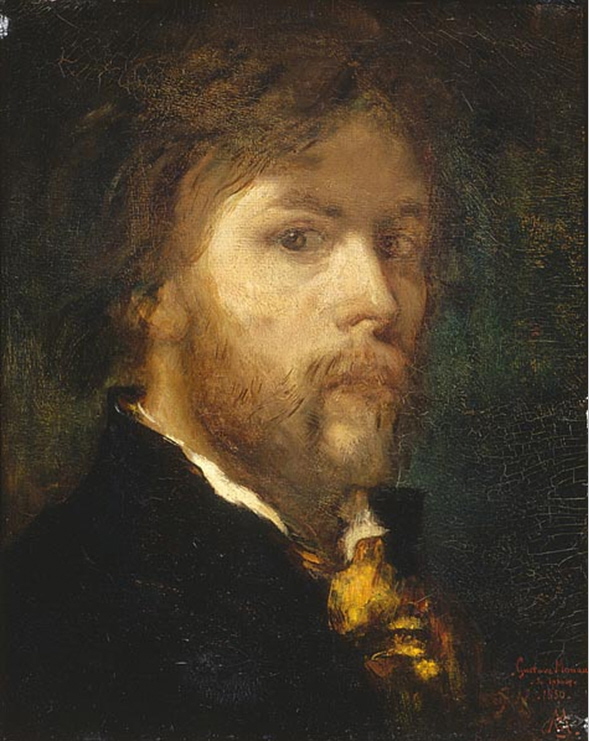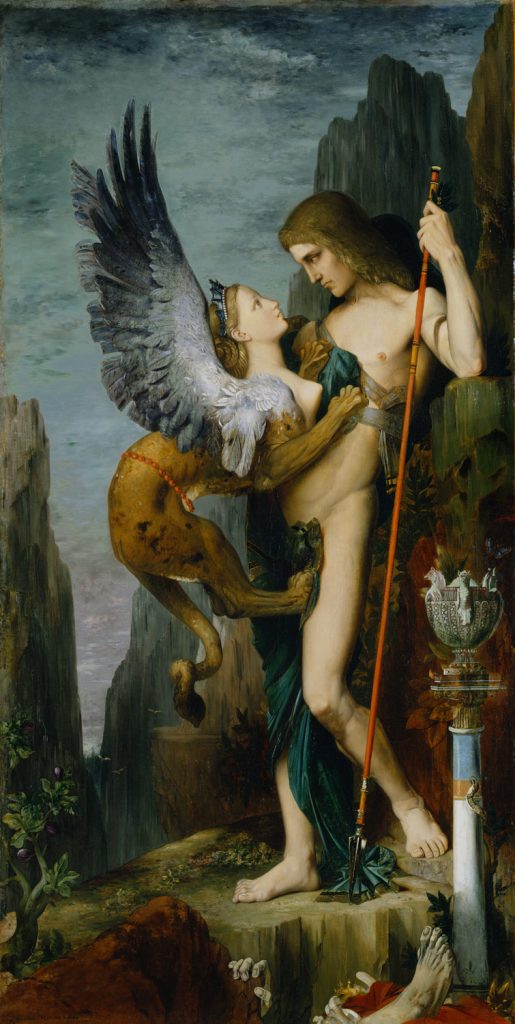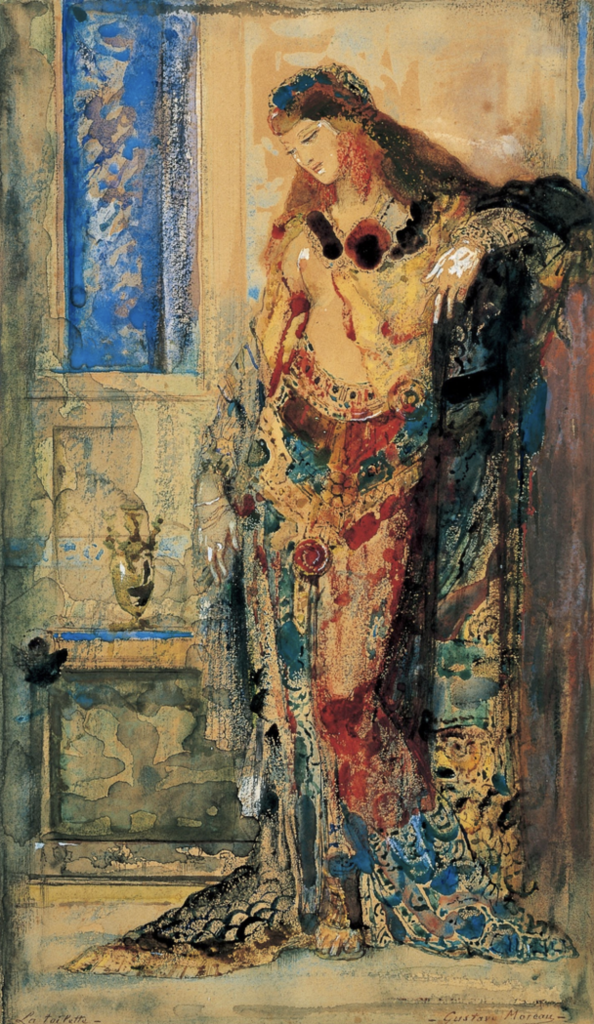
Gustave Moreau was born on the 6th of April 1826 in Paris, France. Although he was born into an artistic family, Moreau only began to show interest in art, especially Byzantine and Early Renaissance, by 1841 during his visit to Italy. He decided to pursue a career in art by studying under Neoclassical painter François-Édouard Pico and soon after at the École des Beaux Arts. It was during that time where he met Theodore Chassériau, a former apprentice of Ingres. Moreau was deeply influenced by Chassériau, especially with his manner of “combining elements of neo-classical and romantic aesthetics.” (Gustave, 2018). Chassériau and Moreau became incredibly close friends, until 1856 where Chassériau died.
Following the death of his close friend, Moreau travelled around Italy, becoming increasingly inspired by Mannerism and Renaissance painting. It was also during his travels where he befriended Edgar Degas. This also was a crucial moment in the development of his style. In 1864, Moreau produced his most important piece – Oedipus and the Sphinx (1864). This piece displays best his subtle yet effective use of symbolism with the fig tree, the snake and butterfly, preserving the mystery of it all. It also presents the heavy influence his Italy trip had on his style, tying back to the Renaissance period. Best said by Anna Souter from The Art Story, Moreau perfectly presented
On the one hand, the Realism of Gustave Courbet, which stressed the depiction of real people and subject matter, and on the other, Naturalism, whose concern with capturing precisely what the eye saw culminated in the formal innovations of Impressionism.

Oedipus and the Sphinx stationed Moreau as a concrete member of the art society. Moreau’s style stayed relatively similar till the late 1870 where he began adopting watercolour and an impressionist brushwork. He also began to center his focus on beautiful woman ornate with vivid jewels whilst still keeping to his symbolic and religious elements. My favorite piece of his exemplifying the change is The Toilette (1885).

The Toilette showcases his perfected watercolour technique. The background is simply leading the eye to the foreground. A sensational woman decorated with jewelled tapestry. The reds, blues and gold are so saturated and not overused. And even with hush quick brushwork, Moreau is able to create shapes, shadows and extreme detail. It is messy yet no element is lost in the chaos. Moreau honed his craft and balance.
Like Goya, Moreau’s art is one hard to define. Although his brushwork might reflect one of an impressionist, it is countered with Neoclassical elements and symbolic references. But what makes Moreau special is how he creates art “where everything in it is elevated, inspiring, moral and beneficent; where all is imaginative and impulsive soaring off into sacred, unknown, mysterious lands.” (The Art of Gustave Moreau).
Cited Work
Figure 2. “ Oedipus and the Sphinx.” Metmuseum.org, www.metmuseum.org/toah/works-of-art/21.134.1/.
“The Art of Gustave Moreau.” The Art of Gustave Moreau | Musée Gustave Moreau, en.musee-moreau.fr/art-gustave-moreau.
The Editors of Encyclopaedia Britannica. “Gustave Moreau.” Encyclopædia Britannica, Encyclopædia Britannica, Inc., 14 Apr. 2019, www.britannica.com/biography/Gustave-Moreau.
“Gustave Moreau.” Artnet, www.artnet.com/artists/gustave-moreau/.
Figure 1. “Gustave Moreau.” Wikipedia, Wikimedia Foundation, 22 Oct. 2019, en.wikipedia.org/wiki/Gustave_Moreau#/media/File:GustaveMoreau02.jpg.
Souter, Anna. “Gustave Moreau Biography, Life & Quotes.” Edited by Greg Thomas, The Art Story, 10 Feb. 2018, www.theartstory.org/artist/moreau-gustave/life-and-legacy/#biography_header.
Figure 3. “The Toilette – Gustave Moreau.” USEUM, useum.org/artwork/The-Toilette-Gustave-Moreau-1885.
